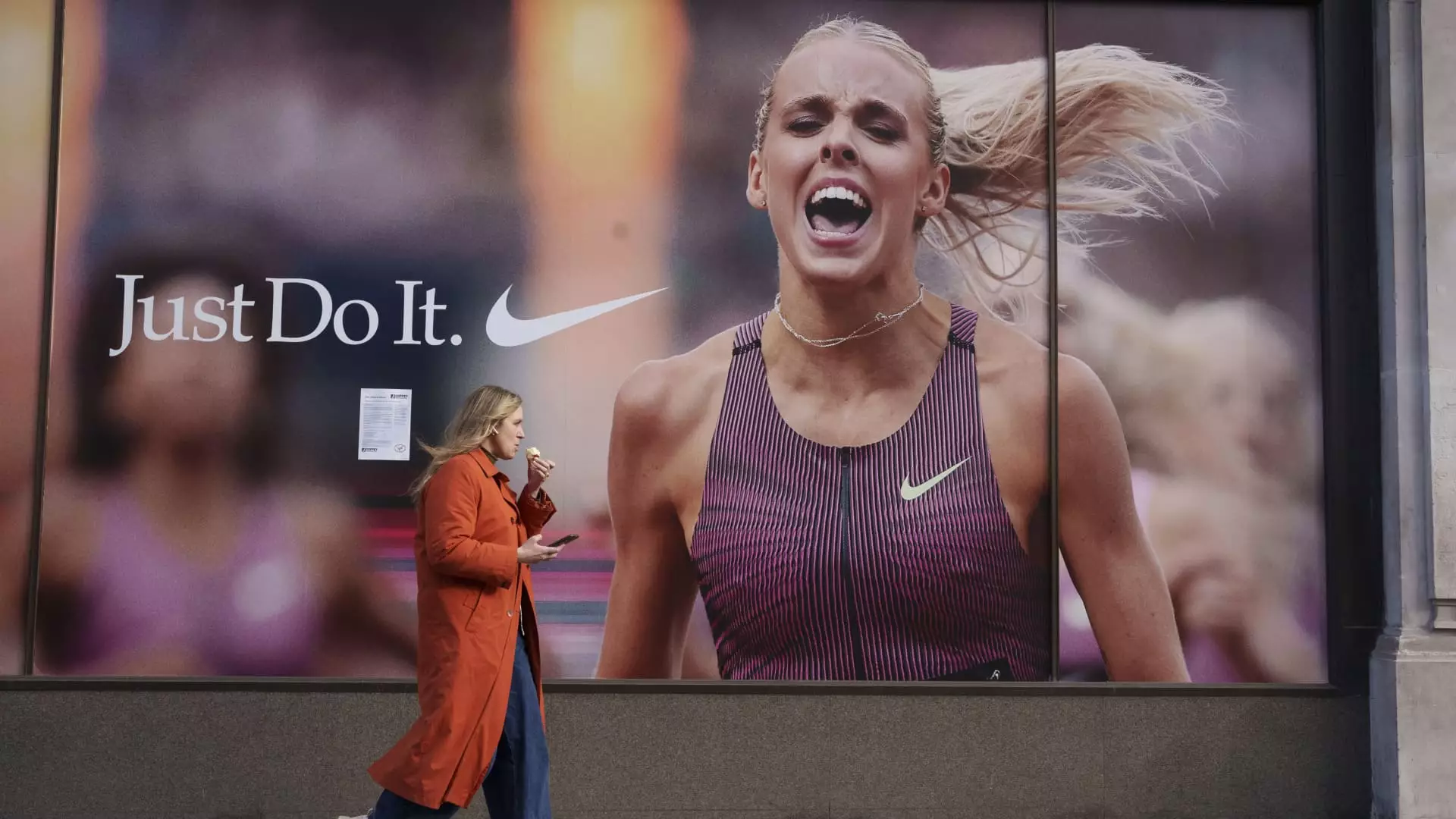Nike’s recent stock surge of 17% might look like a triumphant comeback on the surface, but a closer examination reveals a more precarious story underneath. The sportswear giant is far from a genuine recovery; rather, it is a company grappling with a complex mix of legacy troubles, external economic headwinds, and a turnaround plan that is still embryonic at best. CEO Elliott Hill’s optimistic tone during the earnings call serves more as an aspirational pep talk than a declaration of concrete progress. His cautious claims—“the worst is behind us” and “it’s time to turn the page”—cannot mask the fundamental challenges Nike faces, especially with sales still falling and profits compressed.
The bottom line is simple: investors are buying into hope, not hard evidence. Despite enthusiastic analyst upgrades and bullish commentary, Nike’s core business remains battered, relying heavily on discounts and clearance strategies that erode margins rather than restore brand strength or consumer loyalty. This fragile footing is hardly the robust comeback that Wall Street might fancy.
Tariffs and Inventory: The Twin Anchors Dragging Down Margins
One crucial factor often glossed over in analyst notes is the persistent impact of tariffs and inventory glut on Nike’s finances. The Trump-era tariffs on manufacturing hubs such as China and Vietnam continue to bite, forcing Nike to absorb higher production costs at a time when price sensitivity among consumers is rising. CEOs and finance chiefs alike admit that these tariff headwinds will linger through the first half of fiscal 2026, delaying any meaningful margin recovery.
Equally damaging is Nike’s overstock of classic lifestyle models—Air Force 1, Air Jordan 1, and especially Dunk lines—which have seen sales plummet in excess of 20% year-over-year. The clearance-driven approach to liquidating these unsold inventories not only depresses current revenue figures but risks diluting brand exclusivity and consumer perception. Far from a sign of strength, this inventory problem underscores Nike’s failure to adapt quickly to shifting consumer tastes and market saturation.
A Fragmented Strategy in a Fragmented Market
Hill’s emphasis on “Win Now” initiatives and fresh product launches, such as partnerships with female-led brands and the WNBA star A’ja Wilson’s collection, certainly represents positive steps. However, these efforts appear more like desperate patches than a cohesive strategy. Trying to woo female shoppers and partnering with Amazon—after a four-year absence—signals a company scrambling to regain footing across diverse fronts rather than leaning into a clear, focused vision.
This scattershot approach risks Nike diluting its brand identity. By chasing multiple growth avenues without an unmistakable narrative, Nike might struggle to establish meaningful differentiation in an increasingly crowded athletic and lifestyle market. The company needs tighter execution, not broader experiments—at least until it stabilizes its financial house.
The Economy and Consumer Sentiment: An Unforgiving Backdrop
Nike’s turnaround is occurring in an unfavorable economic context marked by weaker consumer sentiment, rising household debt, and geopolitical uncertainties including immigration debates that indirectly influence labor markets and consumer confidence. These macroeconomic conditions create an inhospitable environment for discretionary spending on premium apparel and footwear. Even as Nike hopes to stabilize and grow, it must confront the reality that many core customers are likely tightening their belts.
Expecting a rapid sales revival under such circumstances is wishful thinking. Nike’s own forecast anticipates continued sales declines in the current quarter, and CEO Hill himself refrains from putting a timeline on real revenue growth. The gamble on external economic recovery is precarious; a misstep could worsen Nike’s financial standing, dragging down stock performance and eroding investor patience.
Wall Street’s Optimism: Premature and Perilous
The flood of buy ratings and optimistic price targets from major banks like HSBC has fueled a rally in Nike’s shares, but these endorsements reflect a broader tendency in the market to elevate short-term momentum over long-term fundamentals. Nike is benefiting from “positive sentiment momentum,” yet the underlying distress is far from resolved.
Wall Street’s pattern of rewarding hopeful narratives risks setting investors up for disappointment. The company faces a “90 days at a time” challenge, meaning it is essentially dependent on executing a turnaround playbook amid unpredictable economic and political conditions. Betting on recovery now might prove costly if the slog to stabilizing sales and margins extends well beyond Wall Street’s current horizon.
In reality, Nike’s story is less about a thrilling comeback and more about a hard, uneven slog toward relevance amid mounting challenges. The company’s leadership needs to avoid sugarcoating progress and instead commit to transparency, sharper strategy, and genuine innovation. Otherwise, this 17% stock spike will remain a transient blip rather than the start of a sustainable rebirth.

